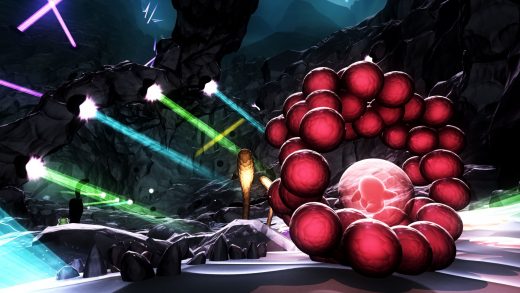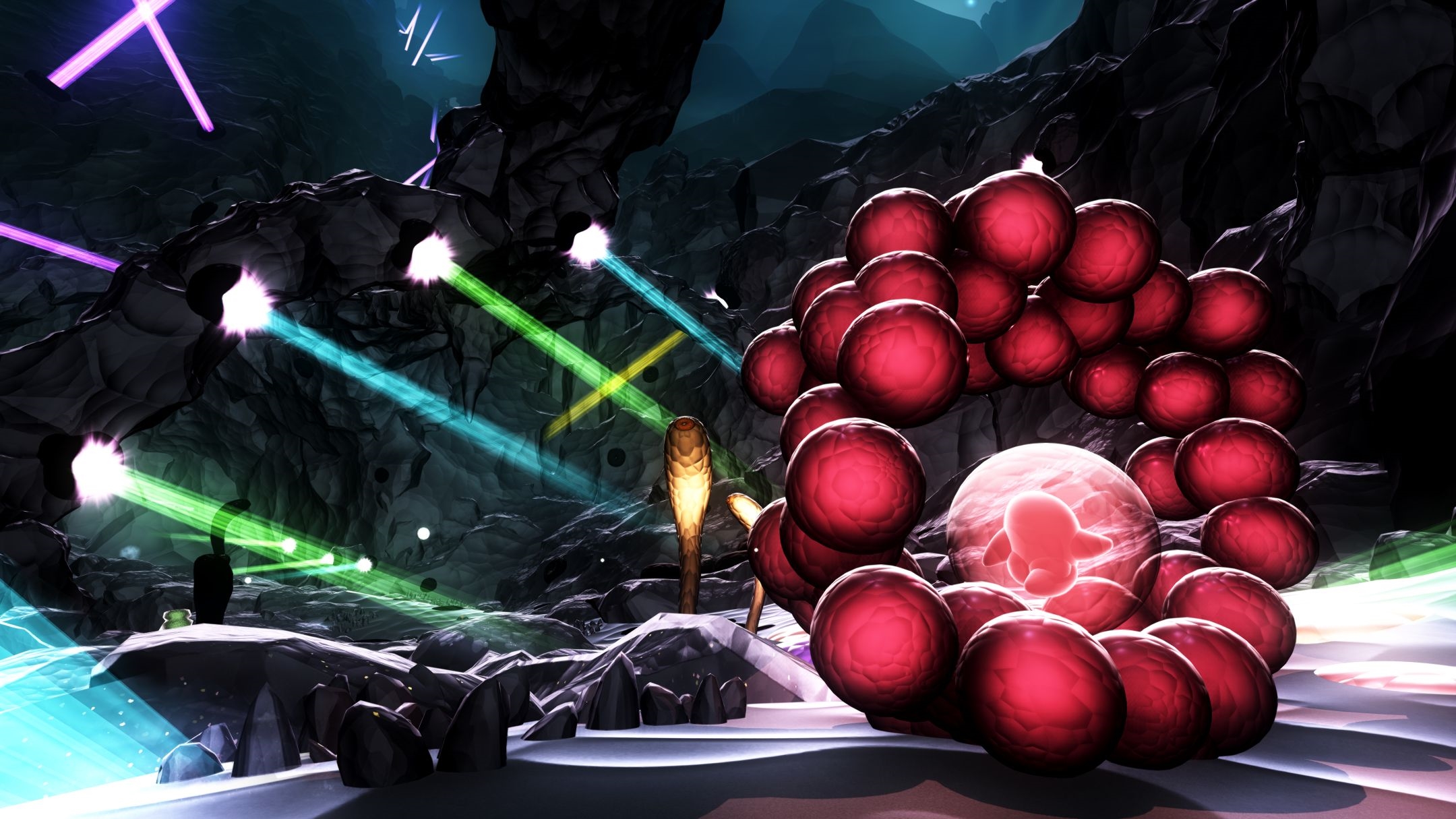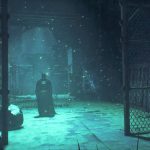Ode – Behind the Scenes of Reflections’ Musical Exploration Game
Ode – Behind the Scenes of Reflections’ Musical Exploration Game
Today sees the release of Ode, the latest game from the Little A incubator at Ubisoft Reflections, producer of Grow Home, Grow Up and Atomega.
While Ode has stylistic elements in common with those games, and a similar emphasis on physics, it’s a very different beast. Built more as an “experience” than a game (but don’t let that put you off), it’s all about music and pushing the players emotional buttons.
Ode is a tricky game to explain without spoiling some of its magic. Producer Anne Langourieux describes it as a “musical exploration where you gradually bring a world to life through music and light.” It’s a game without some familiar features – no hints or instructions (aside from a simple control layout), no overt signposting for the player, no HUD – you figure things out for yourself in a fluid, organic way. It’s also designed to be relaxing – there are no enemies in Ode’s main mode, no threats, no score, no bars to fill – it’s all about exploring and experiencing the game’s beautiful worlds and sounds.
While this post won’t give away too many of the game’s details, if you own a PC and want to discover Ode’s secrets for yourself, I suggest doing so before reading any further. Just click here to pick it up, pop on some headphones and roll into its world. Then come back later to read a little on the thinking and design behind it.
An ode to Ode
When you start the game, you’re dropped into the first of Ode’s worlds and left to find your own way. You take on the role of a special star named Joy – a small squishy-looking character inside a ball. Joy rolls through the world gathering glowing Luminites (fallen stars). These spherical Luminites tag along behind Joy and can be drawn in or released with the mouse buttons or controller triggers. Everything Joy or the Luminites touch plays a musical note and comes to life through light and colour.
As you work through each world you solve puzzles to light up large green gelatinous blobs, which in turn bring whole areas to life. This causes the music to expand, plants to dance and swirling light streams and particles to fill the air. As you bring each area to life, a route will open up to the next. Once you’ve brought life to the whole world, audio cues will lead you to a point where you can leap to the next level.

Anne Langourieux – Producer
Putting the team into the game
I asked Langourieux how hard it was to find like-minded team members to produce a game with such a coherent style, but she explained that it worked the other way around: “Ode actually became what it is because of who we are individually, and who we are as a team. Our individual backgrounds and personalities fuelled the concept and development all the way.”
That Little A allows its developers’ personalities to shine through is clearly illustrated by the fact that Atomega and Ode grew out of the same prototype. That prototype was a “toy” developed by expert programmer Chris Jenner (who Langourieux describes as “the smartest guy on the team”) to investigate ways of simulating characters growing and shrinking dynamically. While one team of developer personalities grew this prototype into Atomega’s old-school fast-paced FPS, the other used it to create Ode’s peaceful, synaesthetic experience.
“What guided us wasn’t a predefined vision of what we had to make, but a more abstract ambition: as a team, we wanted to spread joy, but we also wanted to make the best use of the toy we had. This is why the experience became centred on emotion, while the fun of the toy was inviting us to explore flow and fluidity. It became immediately natural to tie both together via the audio and the visuals. Basically, we let things emerge.”
Worlds of emotion
The game features four main worlds, and the genesis of each came from a distinct emotion – a particular aspect of joy. The first world starts in a cosy blue-grey cave soundtracked by a distant musical burble. As you explore, simple plants chime musically and project light and bright particles as you and your Luminites roll over them. The sound, colour and light gradually build as narrow tunnels open into larger chambers, your actions layering more themes into the music – filling the caverns with joyful melodies, steel drums and bass lines. Eventually, with the world suitably enlivened, you notice an inviting hum and follow it until Joy and the Luminites (good band name) find their way out of the cave, bursting into the sky.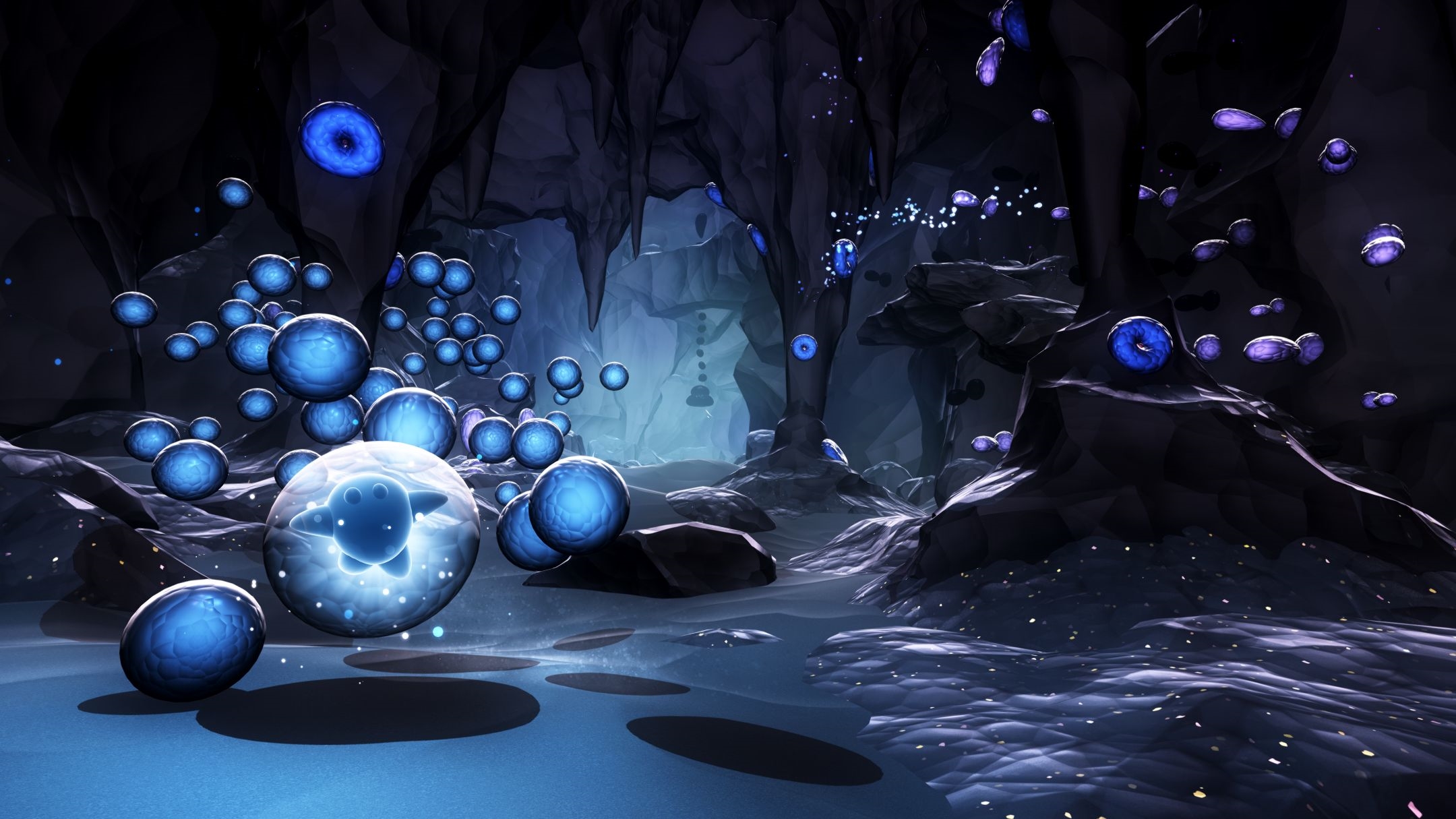 Joy explores Naivety.
Joy explores Naivety.
That first world is based on the emotion of Naivety. Langourieux explains the thinking: “it’s a calm and protective environment with subtle childhood references conveyed through the audio and the simple rounded shapes of the plants. We chose a cave to reflect a maternal environment – because this is the place where you take your first steps with Joy and experiment with the symbiotic nature of the relationship between Joy and the world.”
Past this, players will discover three larger worlds: based on Excitement, Desire and Pure Joy – each bringing their own unique styles and soundtracks, and each evolving the game’s mechanics.
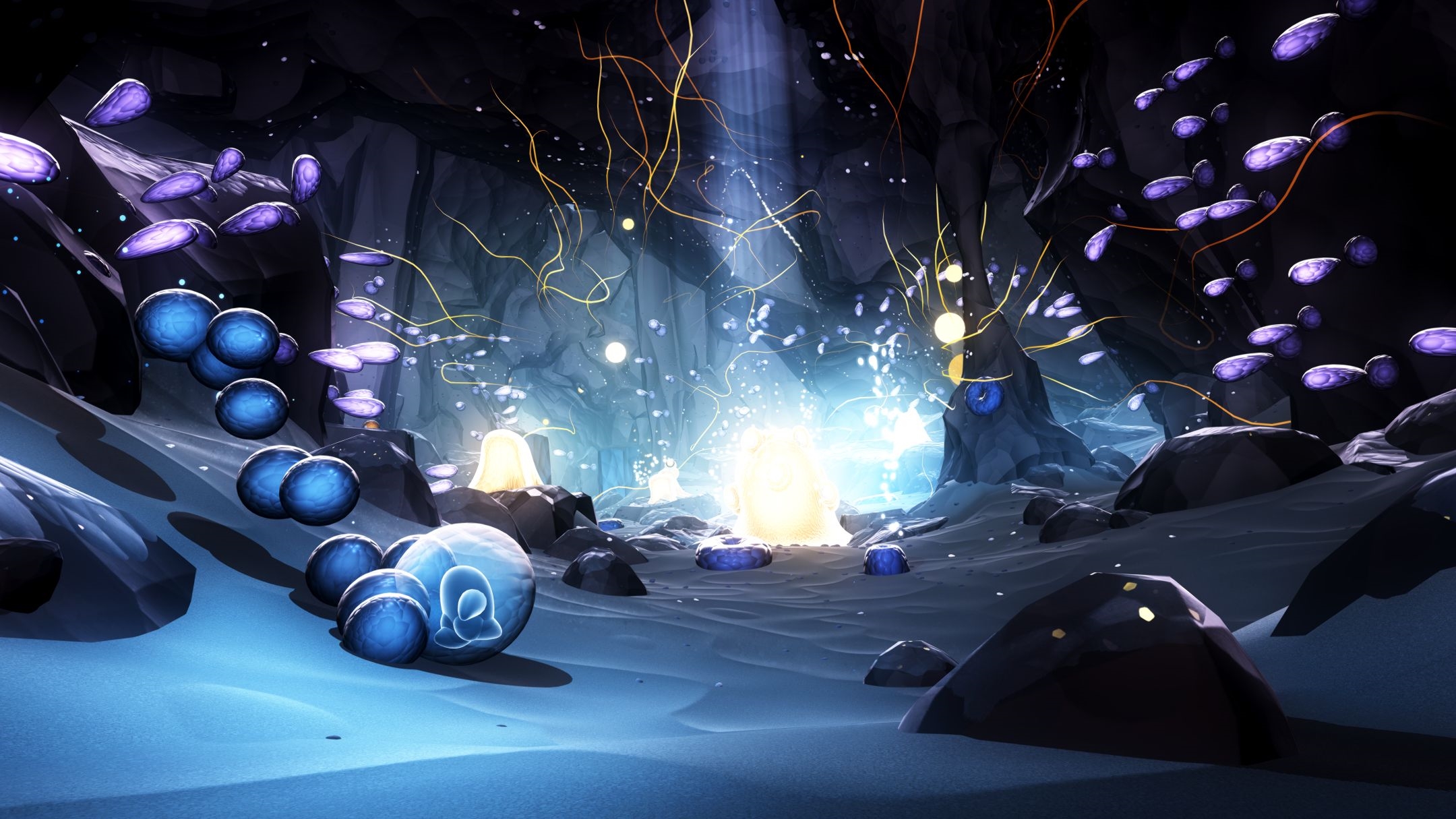 Naivety begins to come to life.
Naivety begins to come to life.
Swans legs
Ode plays in such a fluid, cohesive, relaxed way that it’s easy to overlook the amount of work required to achieve that feel. Under the game’s serene surface, a swans-legs flurry of development challenges had to be surmounted.
For example, the music had to be built in such a way that it could build through each level, allowing the player to unpredictably trigger sounds and add themes as they moved through the world. It also had to do this without sounding like a grand piano tumbling from a diving board.
Composer Romain His is perhaps best known for his work as sound-designer on the mainline 3D Rayman games. He explains the process behind Ode’s sound; “music production had to be ‘decentralised’ and allow for each trigger to work without compromising the harmonic or rhythmic integrity of the music. We had to build a technical system that would act in the background as a ‘conductor’ with some proper scores, harmonic scales, patterns and time signatures.”
“Once the technical canvas for the audio is up and running,” says His, “random improvisation happens in harmony and rhythm, producing a kind of live magic. There was no ‘correct’ or ‘incorrect’ way to trigger the music, since the system was our guardian angel. So with the risk of sounding off-key removed, the team could then focus on the fun. Liam [Charlton, level designer] was then free to try out plenty of fun musical experiments; adding this or that plant in the world, individually or in a group, out in the open air or in a cavern – knowing that the technical system would guarantee the musical integrity of the experience. This system gave Liam a lot of autonomy in his work without compromising Ode’s level design.”
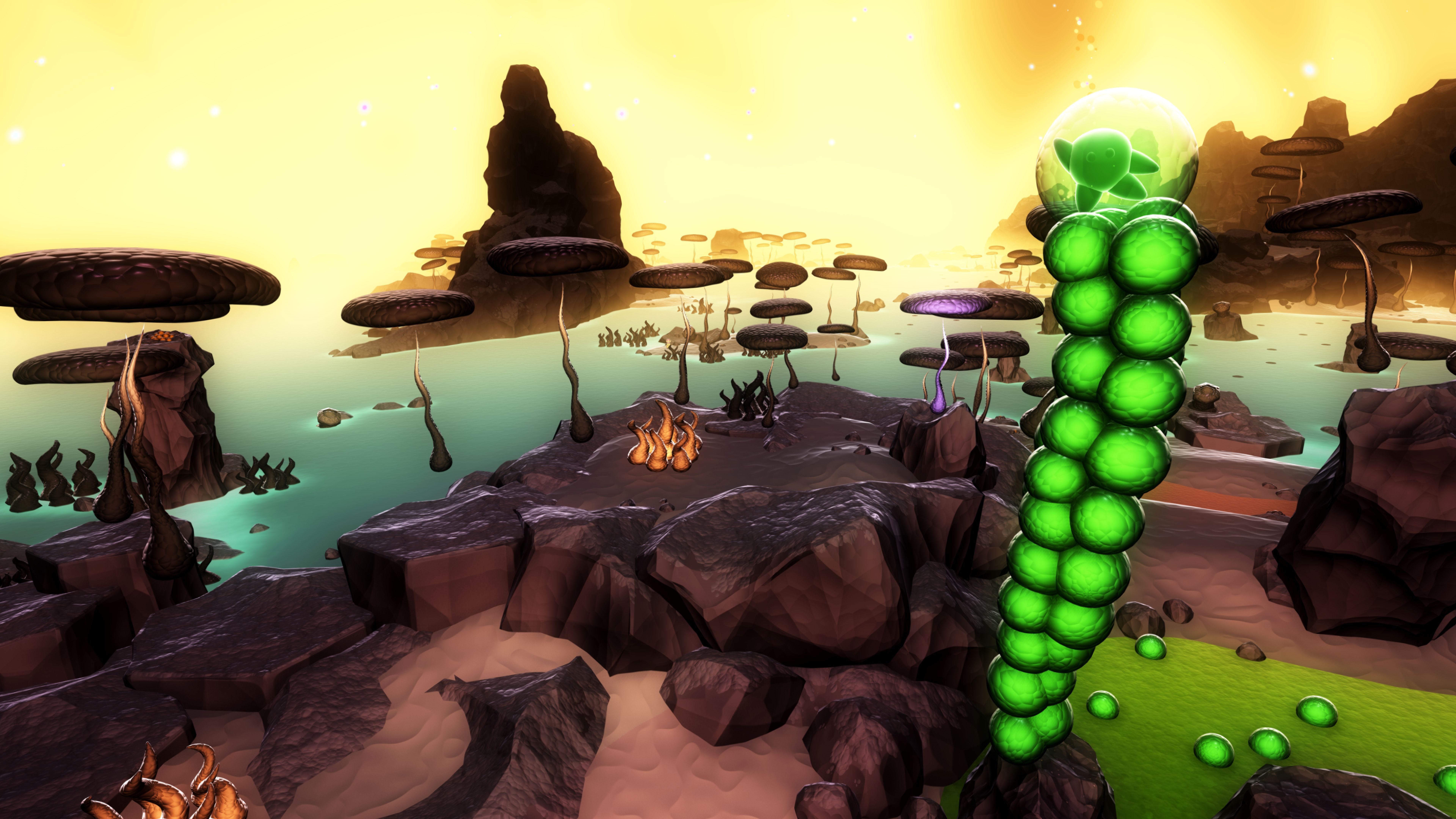 Stacking your Luminites in Excitement.
Stacking your Luminites in Excitement.
Another challenge was keeping players moving in the right direction and making sure they understood their objectives – maintaining a kind of gameplay integrity alongside that of the music. “As soon as we identified flow and navigation as core elements of the experience, Dale [Scullion, game designer] started shaping Ode with design decisions and rules that would support this throughout the game’s development, such as: ‘no in-game hints!’”
This lack of hand-holding really informs Ode’s flow. If the game paused for a tool-tip every time you uncovered a new mechanic, the fluidity of the experience would be diminished. As it stands, you really feel that you’re finding your way around, and learning the gameplay systems and world rules through experimentation and exploration. But this lack of guidance for players could easily have led to a frustrating loop of dead ends and misunderstood mechanics.
“When you think about it, it’s actually super-difficult to resist adding hints to your game when you see playtest players struggling to grasp a particular mechanic. It forced us to find smart ways to introduce each of the game’s mechanics, iterating until we got satisfying playtest results.”
“Without hints, level design becomes a central part of guiding players through the worlds. Liam worked in complete sync with Romain and Jack [Couvela, art director] to define the pacing and flow of each level. As Romain was delivering the different layers of music that would compose the background of a level, Liam would present them visually, ordering the way they would gradually unlock. Once the map and flow of the level was ready and the basic mechanics for each challenge set and tuned, the team would start placing interesting melodic and rhythmic patterns within the level, literally creating a musical open space for players to play with and compose indefinitely – but also to subtly guide players through the experience.”
“Generosity and accessibility became key elements of the design. We wanted to reward players for experimenting with Ode in ways that would feed back into the experience, like discovering how much you can add to the musical background by triggering the different musical patterns placed in the world.”
Inspiration
While Ode is very much its own experience, I wondered whether any other games had inspired the team. Langourieux says that people who played Ode in the early days referenced games with strong musical and visual dimensions such as Flower, Journey and Rez. “They are certainly games that we love and that inspired us in terms of flow and purity of design. But Ode also takes inspirations from outside of the video game industry, like Neil deGrasse Tyson’s TV show Cosmos, a beautiful music video by Panda Bear, a poem by Leonard Cohen and so on.”
Bonus Stage!
Finally, once you’ve brought joy to all four of Ode’s levels, you unlock a bonus stage. This takes the form of a cute time attack freed from the design rules that keep the main worlds relaxed: there’s a score! there’s pressure! there are enemies!
Langourieux describes the bonus stage as being “like a little cherry on the cake. It’s a fun take on the game created by a team of three talented junior developers (an artist, a level designer, and a programmer), making a great use of our core mechanics in a fun and frantic 90-second challenge. The challenge was so much fun that the team decided to add it to the final game.”
Ode is available now on the Ubisoft Store.
The post Ode – Behind the Scenes of Reflections’ Musical Exploration Game appeared first on UbiBlog – Ubisoft®.
(37)

